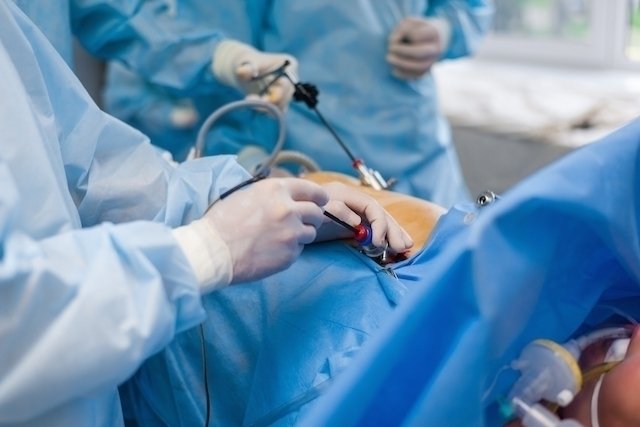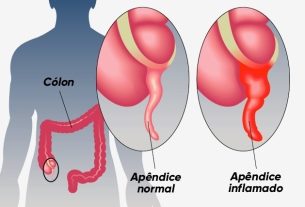Surgery for appendicitis, known as appendectomy, is indicated when the appendix is inflamed. This surgery is indicated as soon as appendicitis is confirmed, which is done by the doctor through physical assessment and abdominal ultrasound or tomography.
The symptoms that indicate acute appendicitis are intense abdominal pain, worsening of the pain when eating, nausea, vomiting and fever, however, it is possible to have appendicitis with milder symptoms, giving rise to a more prolonged disease, which is chronic appendicitis. . Learn how to recognize the symptoms of appendicitis.
Surgery to remove the appendix must be performed within the first 24 hours after diagnosis of the disease, in order to avoid complications of this inflammation, such as suppurative appendicitis or a generalized infection of the abdomen, known as peritonitis.

Types of surgery
Appendicitis surgery is usually performed under general anesthesia and lasts between 30 and 60 minutes, and can be performed in 2 ways:
- Laparoscopic appendicitis surgery: the appendix is removed through 3 small cuts of 1 cm, through which a small camera and surgical instruments are introduced. In this type of surgery, recovery is faster and the scar is smaller, and may be almost imperceptible;
- Surgery for traditional appendicitis: a cut of approximately 5 cm is made in the abdomen on the right side, requiring greater manipulation of the region, which makes recovery slower and leaves a more visible scar. It is normally used whenever the appendix is very dilated or has ruptured.
Hospitalization time depends on the type of surgery and can vary between approximately 1 and 3 days, after which the person can go home, where they must follow the doctor’s instructions to ensure a good recovery.
What is recovery like?
Recovery after surgery for appendicitis can take from 1 week to 1 month in the case of traditional appendectomy, being faster in the case of laparoscopy appendectomy. During the first few days, the person is likely to feel some pain and notice the presence of bruises, however they tend to improve over time, and the doctor may recommend, in some cases, the use of analgesic medications to alleviate the pain.
During this period, some important appendectomy precautions include:
- Stay on relative rest for the first 7 daysshort walks are recommended, but avoiding exertion and carrying weight;
- Treat the wound at the health center every 2 days, removing the stitches 8 to 10 days after surgery;
- Drink at least 8 glasses of water a dayespecially hot drinks like tea;
- Eating grilled or cooked foods, giving preference to white meat, fish, vegetables and fruit. Find out what nutrition should be like after appendicitis surgery;
- Press the wound when you need to coughduring the first 7 days;
- Avoid exercise in the first 15 daysbeing careful when picking up heavy objects or going up and down stairs, for example;
- Sleeping from belly to top in the first 2 weeks;
- Avoid driving for the first 3 weeks after surgery and be careful when placing the seat belt over the scar.
The post-operative period may vary according to the surgical technique or possible complications that may exist, therefore, the surgeon is the best person to indicate when it is possible to return to work, driving and physical activity.
Possible risks
The main complications of surgery for appendicitis are constipation and wound infection and, therefore, when the patient goes more than 3 days without defecating or shows signs of infection, such as redness in the wound, pus discharge, constant pain or Fever above 38ºC should inform the surgeon to initiate appropriate treatment.
The risks of surgery for appendicitis are rare, arising mainly in the event of a ruptured appendix.

Sign up for our newsletter and stay up to date with exclusive news
that can transform your routine!
Warning: Undefined array key "title" in /home/storelat/public_html/wp-content/plugins/link-whisper-premium/templates/frontend/related-posts.php on line 12
Warning: Undefined array key "title_tag" in /home/storelat/public_html/wp-content/plugins/link-whisper-premium/templates/frontend/related-posts.php on line 13



